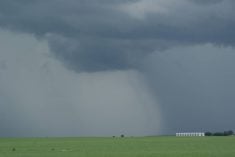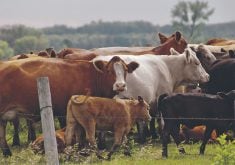BY DAY 80 of the United States border closure to Canadian beef and cattle, many had begun to see the 49th parallel as a nearly impenetrable wall.
On day 81, that changed. A combination of science, cattle industry pressure, consumer confidence, politics and apparently some recognition of trade obligations formed a wedge that forced the border partially open.
Boneless beef from cattle slaughtered at under 30 months of age, plus bovine liver, veal, meat from cervids, and boneless meat from young sheep and goats are expected to have U.S. market access by the end of this month.
Read Also

Farmer ownership cannot be seen as a guarantee for success
It’s a powerful movement when people band together to form co-ops and credit unions, but member ownership is no guarantee of success.
The relief from this announcement will help give the cattle industry and politicians the strength to continue pushing until the border splits wide open to all beef and live cattle trade, as it was before the May 20 discovery of a case of bovine spongiform encephalopathy in a Canadian cow.
As it stands, Canada can soon resume exports of 40 to 50 percent of the product it has been accustomed to shipping to its southern neighbours.
The rest includes beef exports to other countries and the all-important live cattle trade to the U.S.
As she relaxed the trade ban, U.S. agriculture secretary Ann Veneman made no promises on when the border might be reopened to live cattle.
She also reiterated U.S. support, combined with that of Canada and Mexico, for a September meeting of the International Office of Epizootics, which sets standards for animal health.
As Veneman and others have noted, our knowledge about BSE is far greater today than when the disease standards were set. In light of current trade disruptions, a review is needed.
The sooner, the better, else the threat of similar trade disruptions might prevent other countries from reporting animal illnesses, to the detriment of all.
And we must keep pressuring the U.S. and other countries to effect a complete reopening of the border.
A 50 to 60 percent reduction in trade – when that trade is as large, lucrative and far-reaching as the cattle trade – will reverberate in all sectors of Canadian agriculture. Feedlots, auction markets, and cattle trucking firms were the first to be harmed. On their heels comes damage to animal feed suppliers, farm equipment dealers, crop input suppliers and the producers and suppliers of other meats. Loan defaults and unpredictable commodity prices come next, along with job losses.
Then there’s a far wider range of fallout related to forced herd reduction: plummeting barley and feed prices; conversion of barley and pasture acres to other commodities, thereby affecting prices of the selected alternatives; debt accumulation and more.
Let’s praise the efforts of those responsible for last week’s happy news of a partial lift on the ban. But let’s not let this victory distract us from the rest of the war.
– Terry Fries, Barb Glen, D’Arce McMillan and Ken Zacharias collaborate in the writing of Western Producer editorials.














